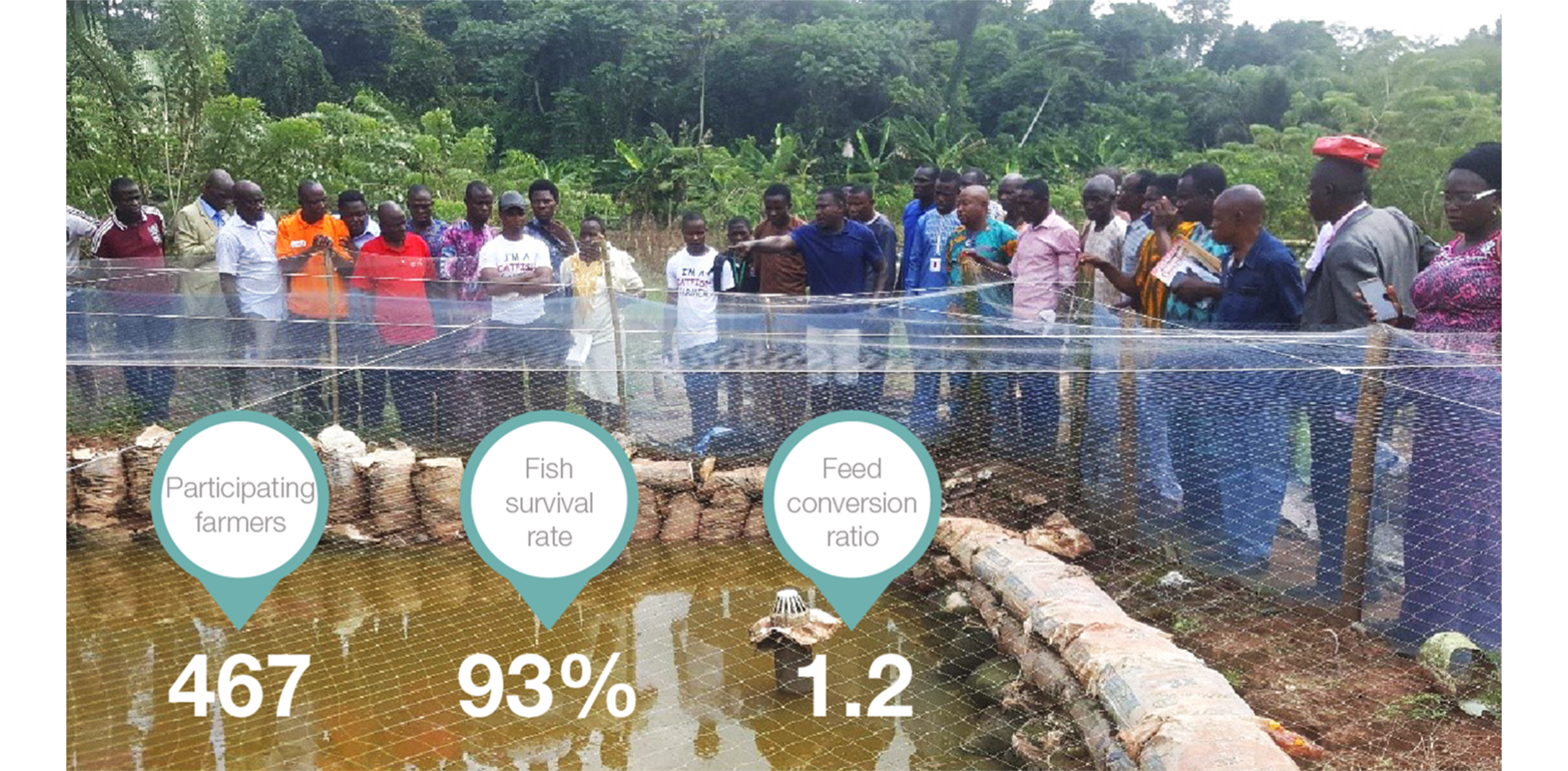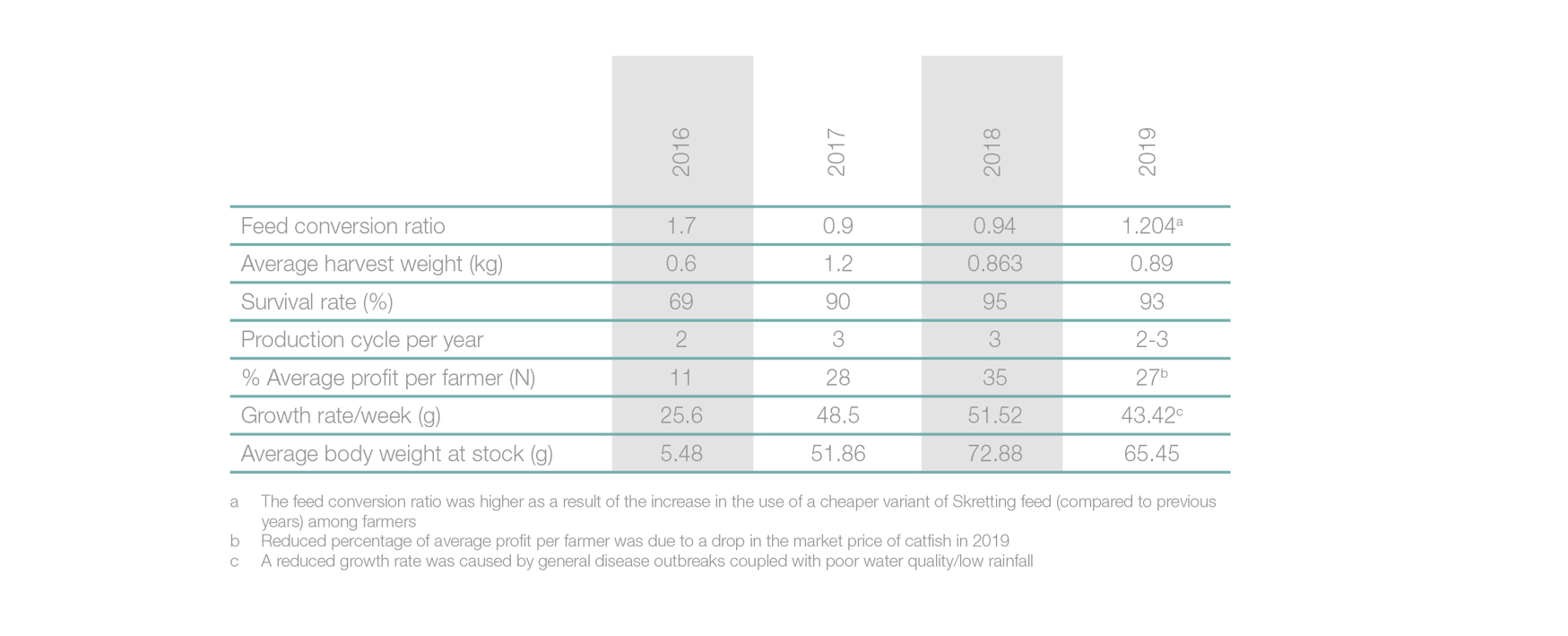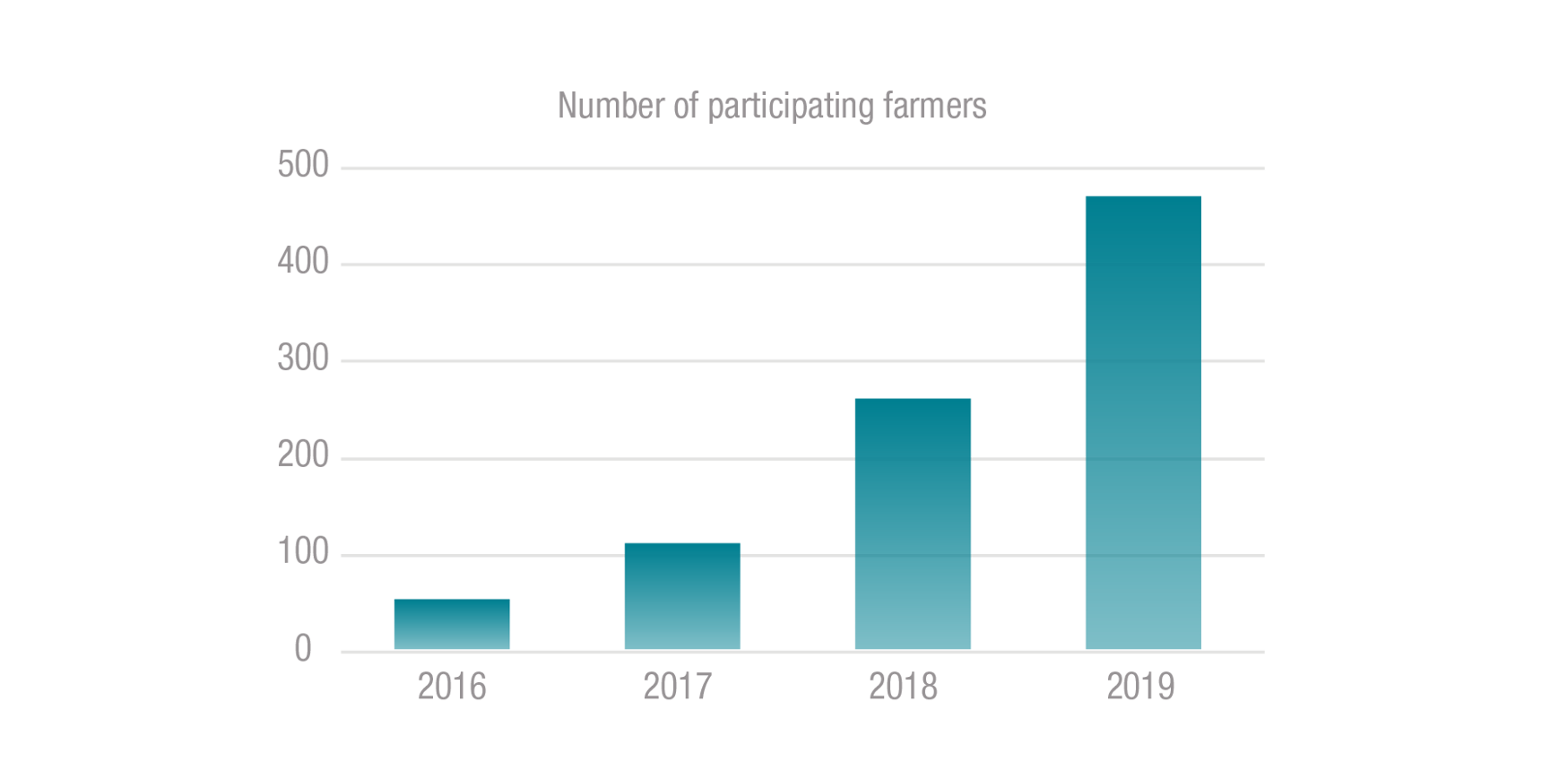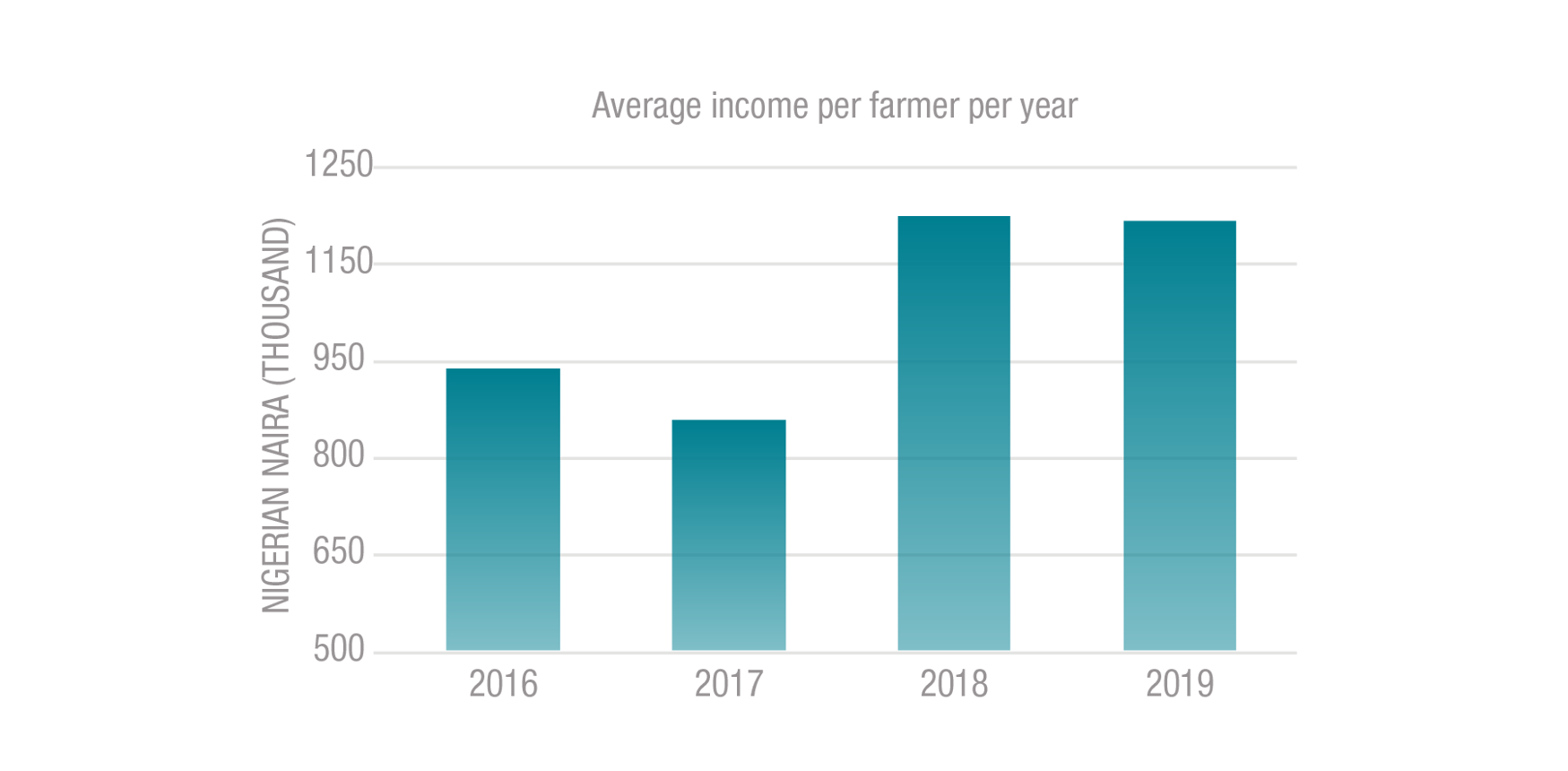9.1 Making ponds more profitable for catfish farmers in Nigeria
Since 2015, we have partnered with Nutreco on the Catfish Sustainability Project (CSP) in Nigeria, working to enhance the production, profitability and environmental sustainability of catfish farming in the Ibadan region, while empowering small farmers to raise themselves out of poverty.
Participating farmers have been able to maintain or improve their incomes, with the average profit per farmer increased from 11% in 2016 to 27% in 2019.
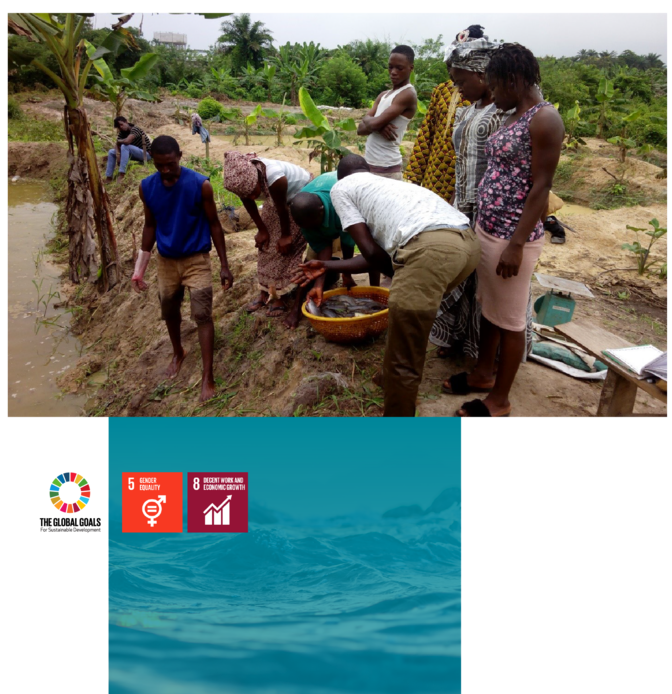
The CSP is funded by Nutreco and Skretting Nigeria and facilitated by the Ibadan Justice, Development and Peace Commission.
In 2019, 227 new farmers joined the project, bringing the total number to 485, clustered into 28 groups that learn from each other and share best practices. Over the course of the year, we helped farmers integrate best management practices and improve the sustainability of their businesses through training, advisory services and learning visits.
A total of 60% of the farmers were found to be fully compliant with the trainings, leading to an improved fish survival rate of 93% in 2019, compared to 65% in 2016. Participating farmers have been able to maintain or improve their incomes, with the average profit per farmer increased from 11% in 2016 to 27% in 2019.
New groups of farmers increased their profit margins from 0-5% to 14%, while groups that had been in the program longer were able to maintain an average profit margin of 33% in 2019.
My participation in the catfish sustainability project of JDPC/Skretting has brought convenience and profit to my business compared to the method used before.
As a result of their experiences through a learning visit to Hyfar Farms in Ogun state, three groups have decided to open four fish marketing outlets.
The training on cooperative management, savings and credit the farmers receive through the project has helped them form cooperatives. Today, at least 190 farmers can access credit facilities from their groups, giving them essential support as they build their businesses.
The project still faces challenges, including the poor quality of catfish seedlings, insufficient funds under micro-financing for farmers, a low selling price of table-sized sized (850-1000g) fish and diseases caused by poor and inadequate water supply during a prolonged drought in the area.
In 2020, we will focus on adding even more farmers to the program, with the aim of 700 participants by the end of the year. The farmers will also establish a cooperative group to provide a united force in determining the market price of catfish. The team plans to incorporate market-oriented innovations, such as the production of value-added products and the use of online marketing tools, to improve profitability.

Since the adoption of best management practices, serial disease outbreak has been controlled on my farm. For example, a present batch of fish are three months old in the pond without a single incidence, which is not normal in my operation before, as a month hardly passed by without an outbreak.
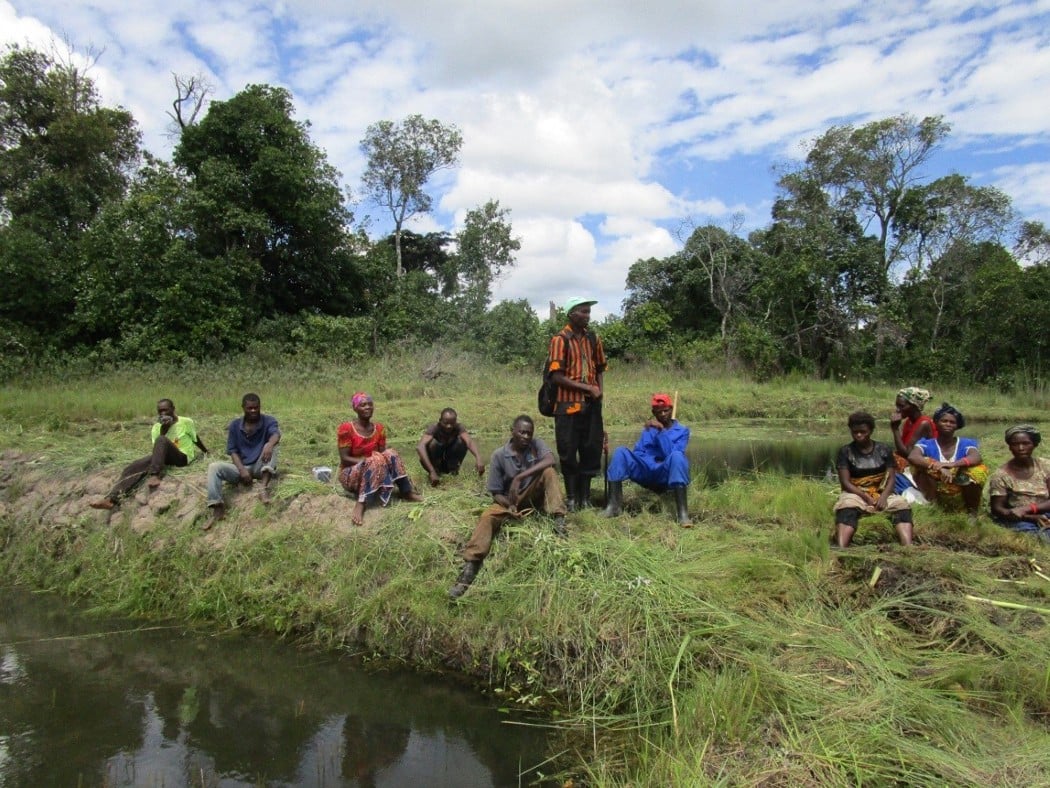
Next
9.2 Helping small-scale tilapia farmers satisfy Zambia’s appetite for fish
In Zambia, in south-central Africa, more than half the population lives below the poverty line. Aquaculture is an important sector of the country’s economy, and Zambians get a high percentage of their protein intake from fish.

